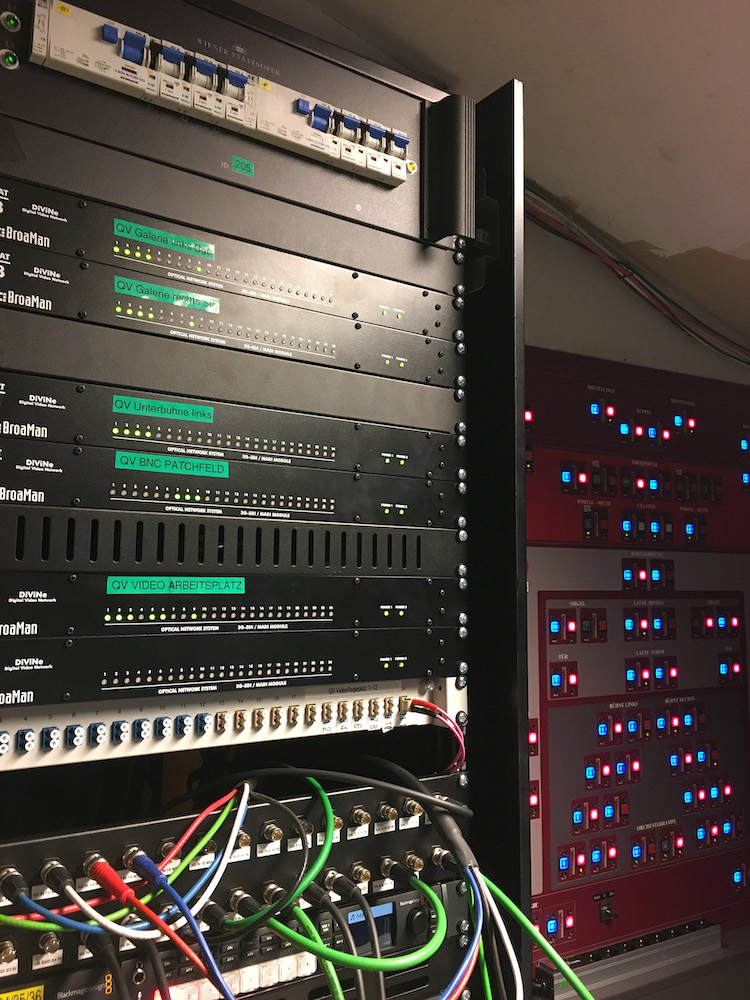Multichannel video transport between different building locations
Back in 2016 Wiener Staatsoper (Vienna State Opera) with its chief sound engineer, Athanasios Rovakis, started investigating the possibility of moving its audio and video distribution to fiber. At first, the Opera House modernised its audio system, purchasing a network fiber solution based around Optocore X6R-FX analogue devices and M8 MADI switch to bring together additional signal sources from distant places in the house, and to share signals for broadcasting.
Looking to expand their communications outreach, by the following year they were considering further options provided by Optocore’s partner company BroaMan. This resulted in them purchasing a point-to-point set of Mux22 multi-signal transmission devices, with the new FrameSync8 board. Offering a superior upgrade to traditional frame sync technologies it allowed sync distribution together with eight video channels, IP and serial data.
But the upgrade path was far from complete, and this year the State Opera invested in a complete BroaMan architecture, with a system based on 10 Repeat48WDM, which provide five point-to-point transport systems with 12 video channels, each transported on a single duplex fiber; a Repeat48 electrical-optical media converter, with six SDI-In and six SDI-Out; and six compact Repeat8-NANO to convert SDI to and from fiber. In a fairly unique deployment, all video is transported on multimode fiber.
When designing the system Mr. Rovakis had quickly realised that BroaMan devices were essential, as in view of the extreme transmission distances in the vast building copper was not an option, and fiber the only viable solution.
“The audio control room has been steadily upgraded over the past 70 years, with devices from many generations and manufacturers — all with their own unique formats, connections and protocols,” he said. “It is a major challenge for any new device that gets installed as it has to work with the old ones. But BroaMan’s Repeat48's brings a complete tunnelling to the entire Opera.”
He added that since the Opera is under a preservation order, new cables are difficult and expensive—therefore they have to work with a limited amount of space, channels and bandwidth. “This made multiplexing basically the only viable option.”
Athanasios Rovakis said he had full confidence in specifying the BroaMan solution since the Optocore-BroaMan platform had been rock solid since first being installed in 2016.
He also saw its many advantages over similar systems. “In contrast to others, the Repeat48 has no boot-up time, which is vital for events with little prep time, and there is zero latency which is equally important.”
Concluded BroaMan’s Technical Sales Manager, Maciek Janiszewski, “We have recently noticed huge interest in our solutions for the installation market, specifically in concert halls and theatres. These venues require ultra-fast fiber transport with high flexibility, and lower channel count than in broadcast.
“The BroaMan portfolio fits very well in that regard, offering simple and cost-efficient, yet extremely reliable solutions. The Vienna State Opera video system is based on point-to-point multichannel fiber transport between different locations in the building, and the Repeat48 family is a perfect match for that.”


